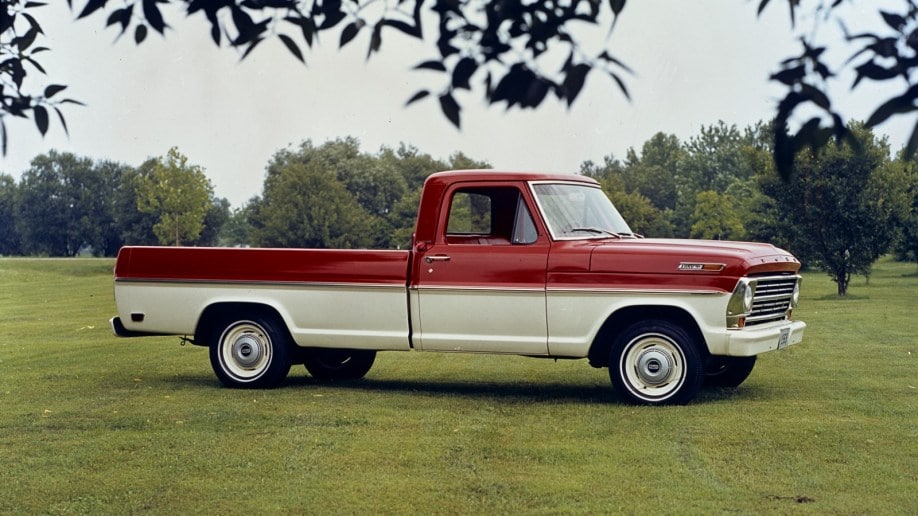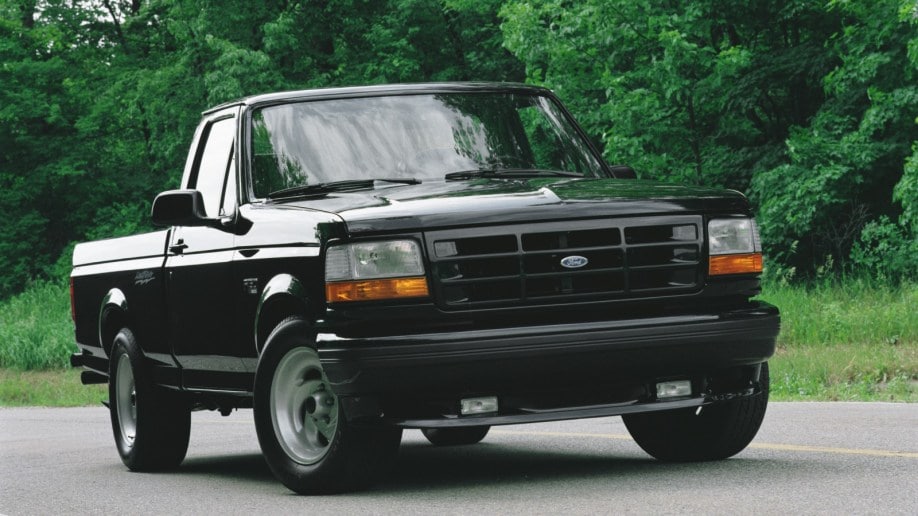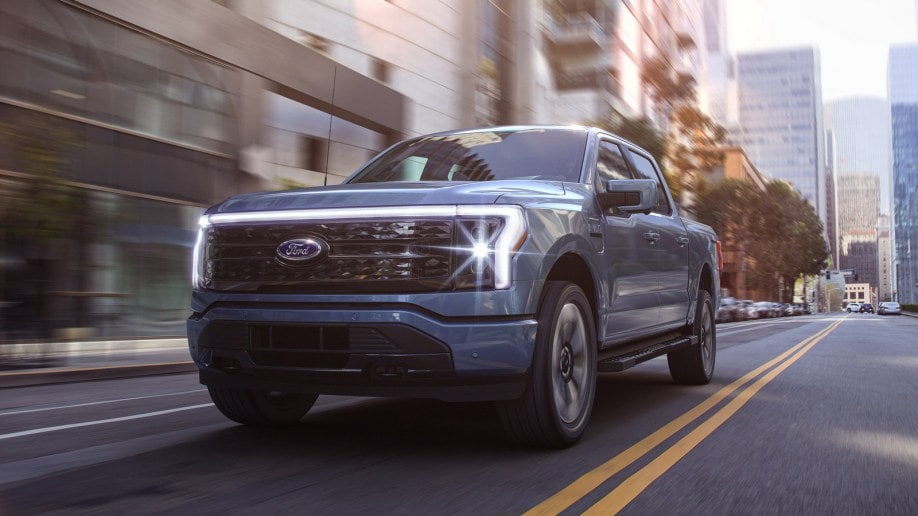
The best-selling vehicle in America for more than 40 years, the F-Series has been through 14 generations. It’s just the second vehicle to cross the 40 million milestone, and it has a long way to go to catch the first. Toyota built its 50 millionth Corolla sometime last summer.
F-Series number 40,000,000 is a 2022 F-150 Tremor in Iconic Silver. It’s a Super Crew, short-bed model powered by a 3.5-liter EcoBoost V6, making 400 horsepower – 305 more than the flathead 6-cylinder in that first F-Series.
You might expect Ford to keep it for sentimental reasons, but the company says, “It’s headed to a customer in Texas to get to work, because that’s what Ford trucks do.”
Ford F-Series Through the Years:
1948-1952
Ford spent the second World War building everything from bombers to tank engines but kept building the same cars it had designed before Pearl Harbor was bombed. In late 1947, it introduced its first new product since 1941 – the first true consumer pickup. Every prior pickup had been built on a car frame. The Ford F-1 Bonus Built used a chassis specifically designed for a consumer pickup, and America has never been the same. It introduced rare luxuries like a driver’s side sun visor. Buyers could opt for a newfangled windshield wiper for an added fee; the driver pumped a foot plunger to make it work.
1953-1956
In 1953, Ford introduced the three-digit number nomenclature it still uses today. The basic work truck was called the F-100. Heavy-duty models up to F-350 were offered. A straight 6-cylinder engine making 101 horsepower came in the base model, but buyers could spring for a small block V8 making an almost-modern 300 hp. The wide bench seat was adjustable, and by 1956, available with seat belts for an added fee.
1957-1960
By 1957, Dodge and General Motors had built trucks on dedicated truck chassis, and Ford needed to up its game. The truck took on modern lines, with the fenders integrated into the hood. By 1959, you could order one from the factory in 4-wheel-drive for the first time (though many older F-Series trucks had been modified to turn all four wheels by post-war mechanics who had learned on Army Jeeps).
1961–1966
Pickups started growing in this generation, as Ford significantly lengthened the truck for the first time. Ford also introduced a unibody design, with the bed and cab built as a single piece. It didn’t sell as well as expected. Ford wouldn’t build a unibody truck again until today’s 2022 Maverick.
1967-1972
Ford updated everything but the chassis for this generation, adding shoulder and headroom by increasing the dimensions of the greenhouse. After 25 years, the base model engine had only increased its output to 105 horsepower, and the most powerful option made less than earlier generations – it was a 205-horsepower V8.
1973-1979
Still riding on a chassis two generations old, the “dentside” model had a concave body line down the sides housing the turn signals. In 1974, Ford introduced a higher-payload version of the F-100, called the F-150. In 1977, it became the best-selling truck in the U.S. – a position it has never given up.
1980-1986
With competition heating up, Ford finally redesigned the entire truck, including the chassis. Post-oil-crisis, this one was wind tunnel tested for aerodynamics. Ford moved from an inline 6-cylinder to a V6 for the base engine, and by 1984, dropped the F-100, making the F-150 the base truck.
1987-1991
For the truck’s 50th anniversary, Ford gave the F-150 a redesign with a new, flat front fascia. Power steering, power brakes, and rear anti-lock brakes became standard equipment. Thanks to new fuel injection technology, the base 6-cylinder was bumped up to 145 horsepower.
1992-1997
Ford softened the F-150’s lines a bit for its ninth generation and built in its first airbag (driver only). In 1993, Ford launched the SVT Lightning Sport Truck. Formula 1 champion Jackie Stewart oversaw tuning the Lightning’s suspension, and a 240-horsepower V8 came standard. In 1995, the F-150 took over from the Volkswagen Beetle as the world’s best-selling vehicle.
1998-2003
With its tenth generation, Ford split the F-Series. Company studies showed that many Americans were using pickups as family cars. So, Ford developed an F-150 with daily driver use in mind and separately developed its F-Series Super Duty line with a separate chassis and powertrain for heavier use.
2004-2008
The F-150 got an all-new platform for the 2004 model year, with a fully-boxed frame and rear shocks mounted outside the frame to smooth out the ride. The base engine was now a 210-horsepower V6, though V8s making up to 300 were available. The stepped front door window – now a Ford signature – made its first appearance.
2009-2014
For its twelfth generation, Ford diversified the F-150 lineup. The new EcoBoost V6 brought V8-like power – 365 horsepower – in a smaller, more efficient package. The truck went automatic-transmission-only. And a luxury trim – Platinum – brought high-end features like premium leather and heated and ventilated seats. But it was the high-performance off-road F-150 Raptor that won headlines.
2015-2020

2021-?
Today’s F-150 is available as a basic work truck, a luxury ride, and everything in-between. That desert racer Raptor still exists, and the Tremor – including that 40 millionth example in Iconic Silver – is a hard-working truck with all the off-road features. There’s a hybrid option, and later this year, an all-electric version (once again named Lightning) that Ford hopes will redefine America’s relationship with the trucks that have built the company’s reputation for 74 years.




















